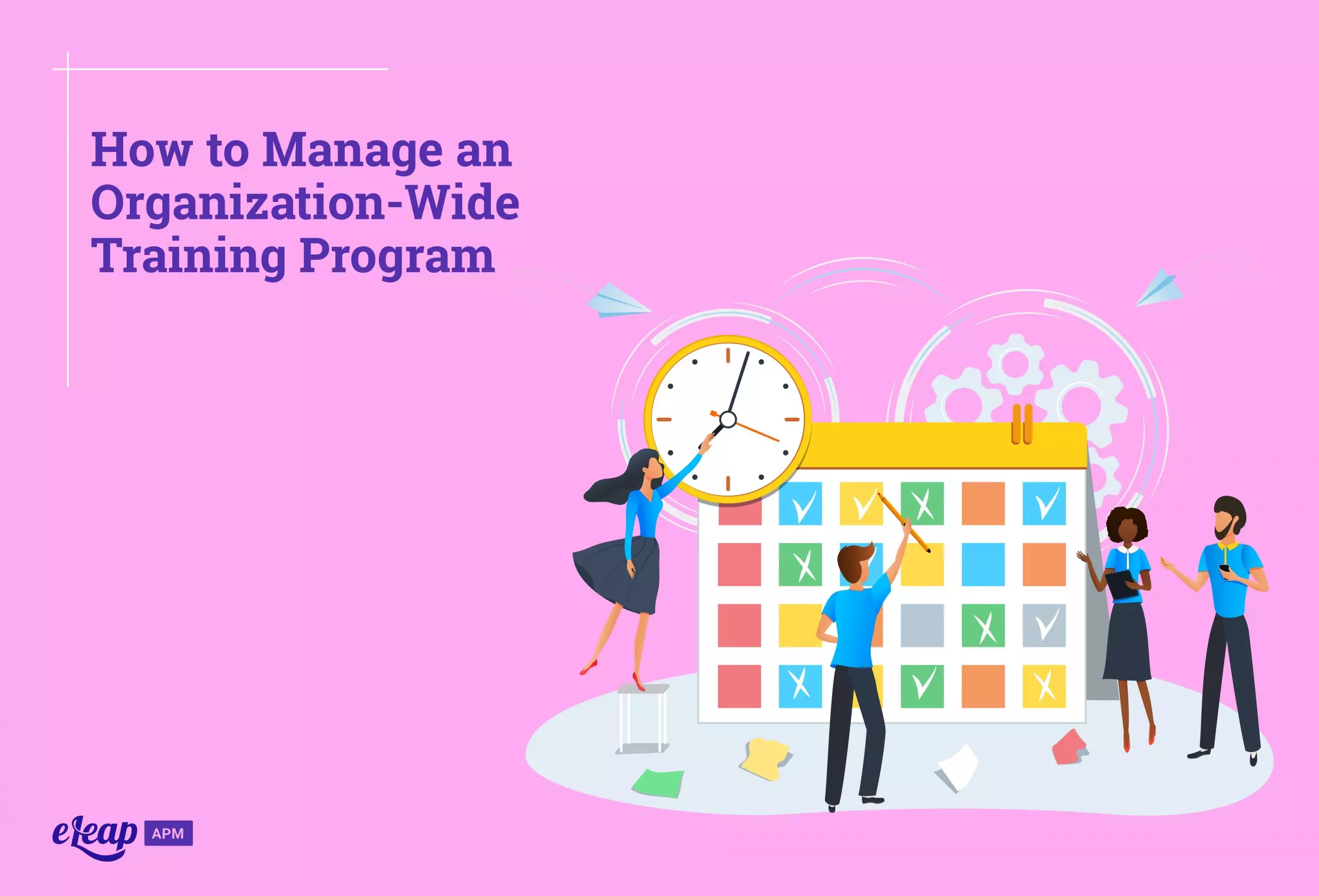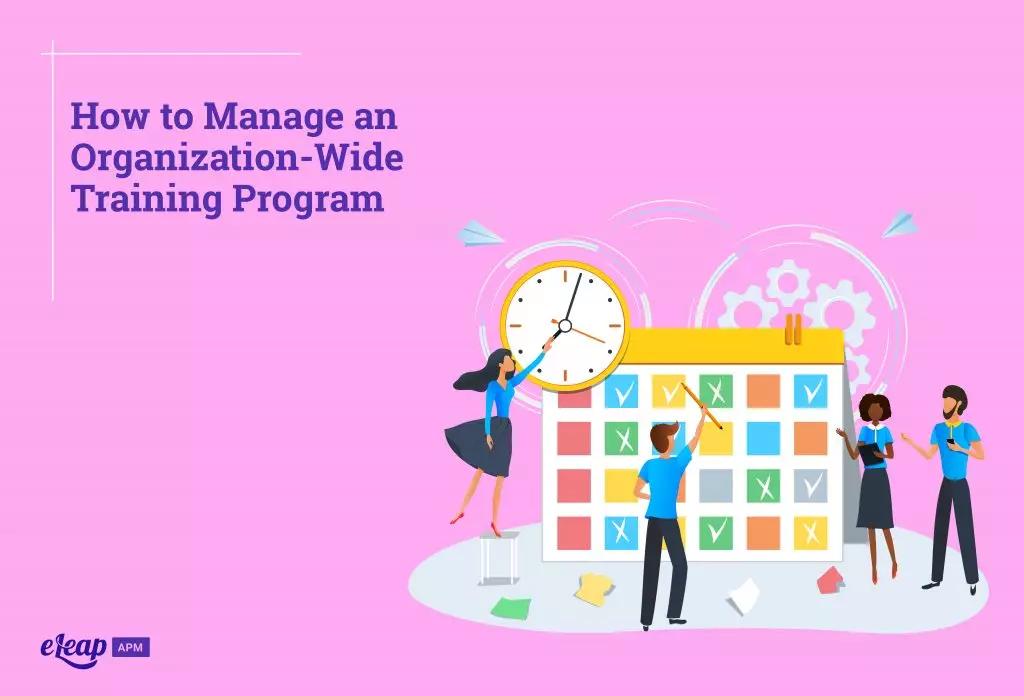How to Manage an Organization-Wide Training Program

Running a successful organization-wide training program can be challenging. However, it’s vital. It has never been more important for businesses and other organizations to ensure that their employees are engaged in training. It helps foster business success, but it is also critical for the professional and personal development of your employees or team members. It shows that you value them and that you take your responsibility to provide them with resources and tools seriously. How do you manage a program with this sort of scale and scope, though?

Separate Needed and Wanted Training
First, you need to make sure that you have a good handle on what training is required (CE for professionals, for instance), and what training is desired (learning a new skill so an employee can apply for a promotion, for example). Everyone within your organization has different needs, goals, wants, and requirements here, and it’s important that you have a good grasp. One way you can gain access to the needed information is through an assessment or survey. Simply have everyone in the organization complete the survey/assessment. You can create anything from a very simple assessment to a very complex one to suit your needs.
However, don’t stop there. You also need to gather data from other locations within the organization. There are numerous sources of information, including the following:
- Employee reviews
- Individual development plans
- Manager feedback
- Industry/government requirements
- Employee feedback
- Performance measurements
Based on this information, you can improve internal mobility, foster better decision-making, and strategic choices, and even guide technological implementations within the organization.
Set Priorities
Every organization must balance training and education with day-to-day operations. This makes it imperative that you can accurately prioritize training needs and interests. Of course, doing so can be challenging, or everyone would be able to balance the load. How do you determine which is the most pressing type of learning? Here are a few basic questions to ask:
- Is the learning time-sensitive? If so, when is the required completion date?
- Is the training already late? If so, is there a penalty?
- Which training needs are most important to critical tasks within the organization?
- Which training is required by government or industry organizations? Is there a hard deadline?
- What training is required for the organization’s succession plan?
- What training will help improve organizational morale most?
- Which training will help to improve employee engagement?
- Which training will have the most significant impact on profitability and/or productivity?
- Which training will have the most impact on employee success and internal mobility?
Consider Your Training Resources
To deliver training, you need the right resources and infrastructure in place. Is it there? If so, how old is it? Is it still able to do the job for which it was designed, or is it failing your learners, and thereby your organization? Your training resources will be central to create an employee training plan, so take the time necessary to assess the situation.
- What existing training materials do you have? Are these hardcopy documents like books and printouts? Do you have electronic training materials like Word docs or PDFs? What about training videos?
- What’s your budget for new content creation? Outdated and inaccurate content must be replaced with something accurate and more up to date. Do you have the budget for new content? Can you maximize your investment through the development of electronic documents or even the implementation of an entire eLearning system?
- How much is it costing you in both money and time for in-person training? Do you have classroom space available, or do you need to rent a venue? How much of a time commitment will it be to have employees attend in-person training? Would that budget be better spent on virtual training?
- Are there free resources available online that can be downloaded and used?
Choose Your Training and Development Methods
You have access to a very wide range of training and development methods today. Yes, you can go the classroom route, with in-person lectures and hardcopy books, brochures, and printouts. However, that can quickly tax your budget and the time required can limit the number of people who can attend, stretching your schedule and potentially causing you to miss key dates.
Instead, consider an eLearning management system (LMS). With eLearning, employees can complete all their training online, through digital technology. That applies to things like lectures and presentations, as well as to text-based learning, videos, and even games designed to engage learners and help them build a deeper understanding of the material in question. An eLearning management system can be branded to your organization’s needs, developed to meet your goals and budget, and then updated quickly and easily when necessary, without the same kind of time and cost required with physical materials.
Track and Monitor
Once you’ve decided on the training and development method, you need to ensure that you can track and monitor everyone’s progress through the system. This can be challenging with in-person learning, but eLearning simplifies the situation greatly. You should be able to track not just module completion, but also bump progress against HR requirements, licensing or credentialing requirements, and other metrics to ensure that everyone stays on track.
Part of tracking and monitoring is creating a training schedule and then ensuring that it is implemented throughout each department. To create the schedule, you’ll need to get buy-in from department heads and team leaders, the collaborate with them to ensure that all employees can complete their training in a timely manner.
Evaluate, Rinse, and Repeat
Finally, evaluate how well all of your systems performed over the previous year. What sort of learning outcomes did you see? Where there shortcomings in specific departments or teams? Did your organization miss key dates for mandatory learning or continuing education? Did the program deliver the return needed without exceeding your budget?
In Conclusion
Managing an organization-wide training program is not simple. The larger the organization, the more complex it becomes. A learning management system and a customized eLearning platform can help to simplify matters, reduce costs, make learning more accessible, and ensure that you’re able to achieve key targets.